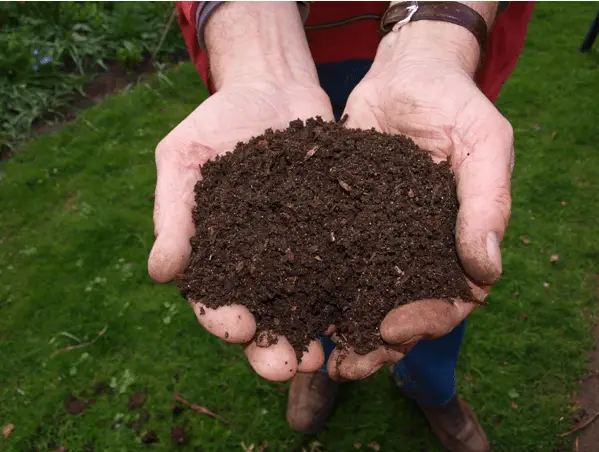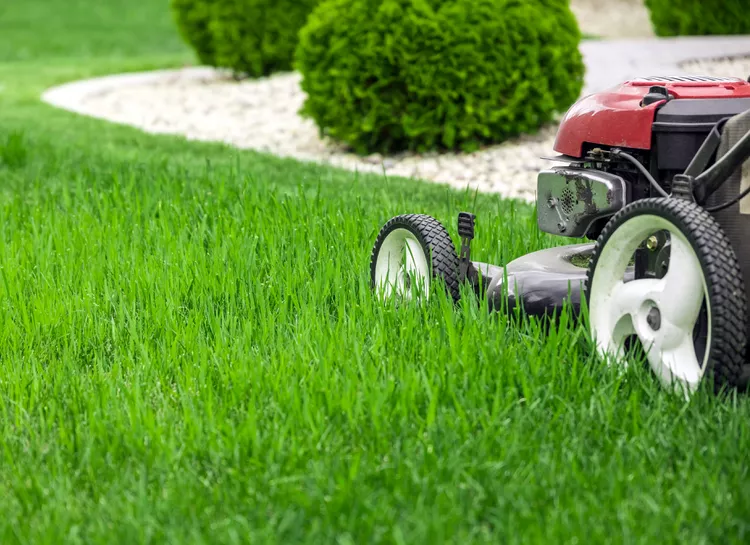How to Green Up Your Lawn Fast This Spring
Last Updated on April 16, 2025 by Duncan
It’s finally spring after months of cold and snow on the grounds. And with it comes spring greenup.
What is Spring Greenup?
Simply expressed, it is when your lawn becomes green again in the spring.
It usually happens when the temperature and light conditions return to normal, and the grasses emerge from their winter slumber.
Why grass greeenup in spring?
The process of grass turning green is firmly entrenched in plant biology and photosynthesis. Several important elements influence this transition as grass emerges from hibernation in the spring.
Chlorophyll, the green pigment found in grass blades, collects sunlight and transforms it into energy via photosynthesis. During the process:
Chlorophyll absorbs light energy.
This energy drives a chemical reaction between water (absorbed by roots) and carbon dioxide (from the atmosphere), resulting in glucose and oxygen.
Glucose provides energy for grass growth, and oxygen is discharged into the atmosphere.
When photosynthesis resumes, grass grows, aided by warm weather and sunlight. This natural process depends on soil conditions, grass type, and nutrient availability.
Temperature: Higher soil and air temperatures cause the grass to “wake up.” Grass growth begins when soil temperatures consistently reach 50°F for cool-season grasses and nearly 60°F for warm-season grasses.
Sunlight: Longer sunshine hours cause grasses to emerge from dormancy, increasing chlorophyll levels.
Metabolism: The plant’s metabolism accelerates, restoring chlorophyll production and photosynthetic activity.
Nutrients: Before photosynthesis fully takes control, this initial growth is powered by stored energy in roots and rhizomes (carbohydrates collected during the previous growing season); nevertheless, nutrient deficits might impede the process.
Most grass species slow down or stop growing during winter dormancy, and their chlorophyll levels drop. For this reason, during the winter months, grass frequently turns brown or straw-colored.
How to green up your lawn fast
As winter ends, grass enthusiasts eagerly anticipate April’s lush, green carpets. However, not all lawns transition at the same rate. If you’re wondering why your lawn lags behind others in the neighborhood and what you can do to speed up the process, there are several things you can do. These things include:
Get rid of debris
Debris, such as leaves, twigs, and dead plants, can suffocate your grass, preventing sunlight and nutrition and promoting illness. Removing this debris improves the beauty of your grass and helps the lawn stay healthy.
You should begin your spring season by clearing leaves, furniture, and other debris. This simple process prepares your grass for fertilizer, weed control, and, most importantly, seeding.
This process also helps sunshine to reach the soil, warming it and encouraging grass to grow, paving the way for a faster green-up.
You should start by surveying your yard and collecting all visible debris. Use a rake or leaf blower for efficiency. You should use compost-collected organic stuff to improve your garden.
Understand your soil needs.
A good lawn begins with healthy soil. Testing your soil will help you uncover any nutritional deficits that may prevent grass growth, and you will take the necessary steps to correct them.
Steps to follow:
- Buy a soil test kit. Get a kit that is accurate and simple to use.
- Collect a soil sample per the kit’s instructions and send it for analysis.
- Adjust your soil based on the results, concentrating on lacking nutrients.
Be strategic with fertilization.
Fertilizing your lawn properly and with the right products allows your grass to absorb important nutrients while minimizing environmental waste.
Fertilizing tip:
- Wait for your lawn to turn green before applying fertilizer.
- Use slow-release fertilizers to feed your grass gently.
- Avoid fertilizing before the last frost to avoid harm and waste.
Mow the lawn properly.
Maintaining a short lawn is only one aspect of mowing; another promotes healthy development. The tone for the year is established by the first mow of the season.
Best Practices:
- Depending on your climate, begin mowing in the middle of March.
- Set your mower to cut warm-season grasses like Bermuda or Zoysia just over 1-inch-tall to remove dead material and promote growth.
- Vary the mowing height according to the type of grass and refer to a guide for precise settings.
Mowing as low as 1 inch can leave bare grass, which can be surprising. Furthermore, such a low mow will expose any flaws in your grading. High spots will be “scalped,” while low spots will be left with more plant material, creating an uneven display.
You can use this opportunity to top-dress low spots with sand to create a more even lawn surface.
The first mow of the year may be tough due to the amount of stuff to remove. To make this process easier, mow the lawn twice at different heights (the first mow is somewhat higher than the second).
An excellent approach to prevent this from happening again next year is to mow your lawn at the right height on the final mow of the year in the fall. Once inactive, it will not actively grow.
Mowing it to a reasonable height just before dormancy saves you from removing too much plant material in the spring.
Ensure that you bag any leftover clippings for the first mow of the spring. Although clippings are an excellent source of organic material for your lawn, the first mow of the year for Bermuda and Zoysia grasses generates a high volume of clippings, and your freshly cut lawn will require sunlight. If you go this route, you can use the leftover clippings on your lawn for the rest of the year.
You can mow other warm-season grasses, such as St. Augustine or centipede grass, at their normal heights, but you should do your first mow of the year around mid-March. Research and determine the heights at each grass type that should be maintained.
Water the lawn wisely.
Proper lawn watering is critical, especially when temperatures begin to rise. A well-watered lawn will recover from winter dormancy faster and grow stronger.
Watering Tips:
- Begin regular watering routines as the season changes from cold to warmer.
- Install irrigation systems manually to ensure continuous moisture or water if you want.
- Avoid overwatering, as this might lead to disease.
Parting shot
Helping your lawn quickly green up in the spring isn’t as difficult as most people think; however, you should follow the above tricks to ensure success. We hope this guidance will help you improve your grass for the spring season and you have the lawn of your dreams.


